#Everest base camp
Explore tagged Tumblr posts
Note
Not a question just something exciting! Sam is in Nepal getting ready to climb to the back side of Everest. He'll make it to base camp. No small feat!
Yes, Anon, I'm SO excited for him!


As I posted awhile ago, I'm obsessed with all things Mount Everest, and this is a big deal. Base Camp is at 17,000 feet elevation. You can't just go there immediately, or you'll get severe altitude sickness. People usually take a couple of weeks to climb slowly and acclimate to the higher altitude. You don't really know how your body will react until you do it. Some people are fine and some aren't. Sam has climbed a lot of munros and he's very physically fit, so I have a feeling he'll do great. Very much looking forward to reading about his journey and continuing to see pics. This will be a life changing experience for him for sure.
60 notes
·
View notes
Text
Why the Everest Base Camp Trek is a Must-Do Adventure
The Everest Base Camp Trek (EBC Trek) is one of the most iconic and sought-after trekking experiences in the world. This legendary journey takes you closer to the majestic Mount Everest, the tallest mountain on Earth, while offering breath-taking views of several other towering peaks like Lhotse, Makalu, and Cho Oyu. But the trek isn’t just about the destination—it's about the entire journey, the vibrant Sherpa culture, the serene landscapes, and the sense of accomplishment you'll feel when you reach Everest Base Camp itself.
At Trek The Himalayas, we are passionate about making this adventure as memorable and fulfilling as possible. Here’s why the Everest Base Camp Trek should be on every trekker’s bucket list.
1. Incredible Views of Mount Everest and Other Himalayan Peaks
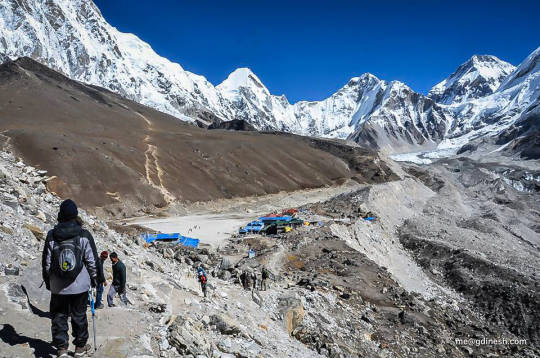
The Everest Base Camp offers unparalleled views of Mount Everest (8,848.86 meters), the highest peak in the world. Along with Everest, you’ll witness other world-famous mountains like Lhotse, Makalu, Cho Oyu, Ama Dablam, and Nuptse. These towering giants will accompany you throughout your trek, constantly reminding you of the awe-inspiring beauty and scale of the Himalayas.
One of the highlights is Kala Patthar—the highest point on the trek at 5,545 meters. From here, you’ll be treated to a panoramic view of Everest, and other peaks such as Pumori, Lhotse, and Nuptse. The sunrise and sunset views from Kala Patthar are magical, with the peaks glowing in the morning light and transitioning to soft golden hues in the evening.
2. Cultural Immersion in the Sherpa Villages
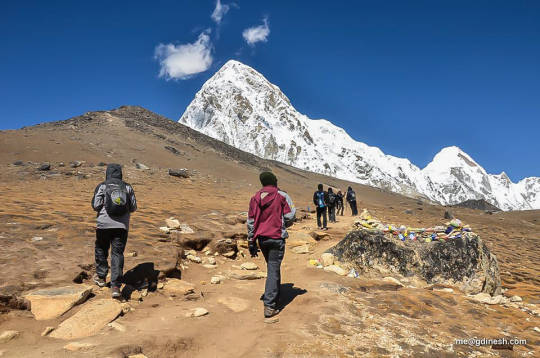
The EBC Trek isn’t just a journey through nature; it’s a cultural expedition as well. The trail passes through several traditional Sherpa villages like Namche Bazaar, Tengboche, and Dingboche, where you’ll have the opportunity to experience the hospitality of the Sherpa people. The Sherpas are known for their resilience and deep connection to the mountains.
Throughout the trek, you’ll encounter Buddhist monasteries, prayer flags, and stupas, offering you a spiritual experience that enhances the physical challenge of the trek. Trekking in the heart of Sherpa culture, you'll learn about their rich traditions and lifestyles and gain insight into their everyday lives in this remote Himalayan region.
3. Experience the Thrill of High-Altitude Trekking

Trekking to Everest Base Camp is not just about reaching a destination; it’s about the physical challenge and mental resilience required to reach it. EBC trekking takes you to elevations of over 5,000 meters, and trekking at high altitudes is not something most people experience. The sensation of reaching Everest Base Camp, standing at the foot of the world’s highest peak, is indescribable. The sense of achievement is unmatched and one of the main reasons why so many trekkers set out on this journey.
The trail offers exhilarating experiences such as crossing suspension bridges over rushing rivers, trekking through dense pine forests, and navigating through rocky terrain. As you climb higher, the views become even more dramatic, motivating you to push through the challenges of the trek.
4. The Sense of Accomplishment at Everest Base Camp

Reaching Everest Base Camp is a dream come true for many trekkers, and it’s one of the most rewarding moments of the trek. After several days of walking through rugged trails, beautiful valleys, and crossing high-altitude passes, arriving at the base camp itself is a thrilling and emotional experience. It is the starting point for those who attempt to summit Mount Everest and represents the culmination of a challenging journey for trekkers from around the world.
The feeling of standing at the base of Everest, with the grandeur of the surrounding peaks and glaciers, is one of the most satisfying accomplishments any trekker can achieve.
5. Exploration of Sagarmatha National Park (UNESCO World Heritage Site)

The Everest Base Camp Trek takes you through Sagarmatha National Park, a UNESCO World Heritage site. The park is rich in biodiversity, home to rare species like the snow leopard, red panda, and Himalayan tahr. It also offers stunning views of rivers, glaciers, and valleys that add to the trek's natural beauty.
As you trek through this national park, you will encounter ancient Buddhist monasteries, including Tengboche Monastery, and cross pristine alpine meadows, crystal-clear lakes, and other awe-inspiring landscapes that showcase the beauty of the Khumbu region.
6. Tea House Stays and the Unique Experience of Mountain Lodging
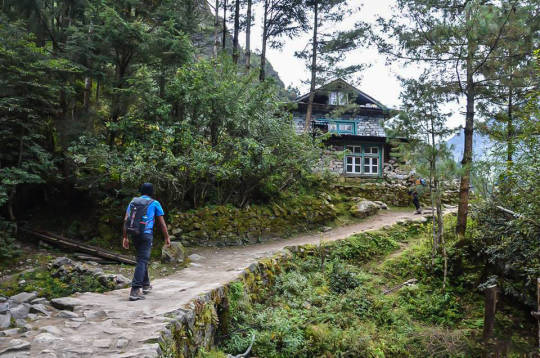
A trek to Everest Base Camp is a teahouse trek, meaning that along the route, you will stay in local tea houses or mountain lodges. These cozy accommodations, built from wood and stone, offer a warm place to rest after a long day of trekking. Staying in these mountain lodges is a unique experience in itself, where you will be surrounded by stunning views of snow-capped peaks.
The tea houses provide meals and shelter, and you can interact with fellow trekkers and locals. It’s a wonderful way to unwind after your daily trek while soaking in the authentic mountain atmosphere.
7. Kala Patthar: The Ultimate Everest Viewpoint

When you reach Kala Patthar, you’ll experience one of the best panoramic views of Mount Everest and its surrounding peaks. Located at an altitude of 5,545 meters, Kala Patthar is the highest point of the trek and offers breathtaking views of Everest, Lhotse, Makalu, and other prominent peaks. Watching the sunrise from here is a surreal experience that many trekkers describe as one of the highlights of the entire journey.
8. A Journey Through History and Legacy
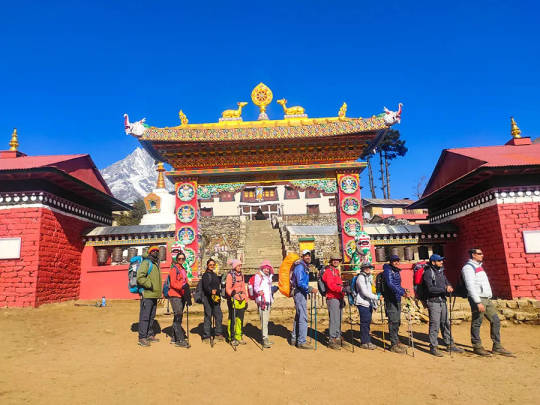
Along the EBC Trek, you’ll pass by memorials for famous mountaineers like Tenzing Norgay and Edmund Hillary, who first successfully summited Mount Everest. These memorials, located near Dughla and Tenzing Norgay Stupa, are poignant reminders of the courage and perseverance required to scale Everest. The sense of history adds a meaningful dimension to the trek, reminding trekkers of the great legacy left behind by these pioneers.
9. An Adventure That Will Stay With You Forever
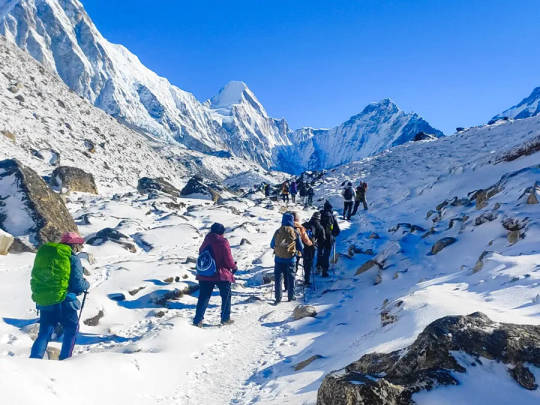
The Everest Base Camp Trek offers an adventure unlike any other. With each step, you’ll be rewarded with views of towering mountains, lush forests, rushing rivers, and ancient villages. It’s a trek that combines adventure, culture, and natural beauty, making it a bucket-list journey for trekkers across the globe.
Why Choose Trek The Himalayas for Your Everest Base Camp Trek?
When you embark on the EBC Trek, it's important to choose a reliable and experienced trekking partner. Trek The Himalayas has a team of expert guides and porters who know the Everest region inside and out. With our years of experience, we ensure your trek is safe, enjoyable, and unforgettable. From the right gear to acclimatization advice, we’ll help you prepare for the journey of a lifetime.
Ready for the adventure of a lifetime? Let Trek The Himalayas guide you on the Everest Base Camp Trek—an experience you will cherish forever.
#everest base camp trek#everest base camp#trek the himalayas#trekking in nepal#ebc trek#ebc trekking
2 notes
·
View notes
Text
History And Origin of Nepal: A journey through time
Lying right in the middle of the Himalayas between India and China, Nepal is a country that is full of a whole of history. The story it tells is of myths, legends, dynasties, and influences that flowed on the waves of both the Indian subcontinent and the Tibetan plateau. The origin of Nepal seems to be completely intertwined with geographical elements, religion, and cultural heritage. In this blog, one is introduced to the historical journey of Nepal and formation of Himalayas, from its root to the formation of a modern nation.
Mythological Beginnings: Legends of Nepal's Formation
The history of Nepal opens with mythological accounts about the origin. Ancient legends say that Kathmandu Valley was once a huge lake, inclusive of what today is considered the cultural and historical heart of Nepal. According to this, a Buddhist saint called Manjushree, coming from China, saw a lotus flower falling in the middle of the lake and wanted to reach it. At Chobar, he cut a gorge with his sword thereby allowing it to drain the water so that the valley could be habitable. Thus, the fertile land of the Kathmandu Valley came into being. This mythical event is symbolic of the birth of Nepal. Another popular legend describes how the god Vishnu, in the avatar of a boar, or Varaha, raised Nepal out of the waters. These myths said much not only about how the people of Ancient Nepal viewed their land but also revealed the deep religious meaning always permeating Nepalese culture.
Unification of Nepal: The Rise of the Shah Dynasty
Nepal’s political landscape changed dramatically in the 18th century with the rise of Prithvi Narayan Shah, the ruler of the small principality of Gorkha. He embarked on a campaign to unify the various fragmented kingdoms and principalities of the region. After several attempts, Prithvi Narayan Shah successfully conquered the Kathmandu Valley in 1768, marking the beginning of the Shah dynasty and the creation of modern Nepal. Prithvi Narayan Shah's unification campaign laid the foundation for a strong, centralised kingdom. He strategically kept Nepal independent from both the expanding British Empire in India and the Qing Dynasty in China by maintaining a policy of isolation and diplomacy.
The Collision of India and Eurasia: Birth of the Himalayas
Nepal is home to Himalayas: the home to world's highest peaks, including Mt. Everest.The story of the Himalayas really started when the Indian subcontinent, shortly after it broke away from Gondwana around 100 million years ago, began its drift northward. There laid between the Indian plate and the Eurasian plate at that time the Tethys Ocean. In this process, the Indian plate was submerged underneath the Eurasian plate, and it is both slow and powerful. These movements created strong geological forces which pushed up the sedimentary rocks of the Tethys Ocean, hence creating the Himalayan mountain range. The impact of the collision caused the Earth's crust to fold, that formed the towering peaks of the Himalayas. The immense pressure created large thrust faults, which caused the land to rise vertically. Over time, these processes built some of the highest mountains in the world, including Mount Everest (8,848 meters) and Kangchenjunga (8,586 meters), both of which are located in the Nepalese Himalayas.
Geological Zones of the Nepal Himalayas
The Nepalese Himalayas were divided into a number of distinct geological zones, which reflect their complex history of formation. These include the following:
Terai Plains: This is a flat, fertile region situated on the southernmost part of Nepal, marking the northern edge of the Indo-Gangetic plains. They actually were formed by sediments deposited by the rivers flowing down from the Himalayas.
Siwalik Hills: Lying just north of the Terai, Siwalik Hills are the youngest part of the Himalayas that were uplifted about 10 to 20 million years ago. It is a folded and faulted rock area which has been uplifted relatively recently.
3.The Mahabharat Range: This range lies north of Siwalik, much older, loftier, and with steeply descending slopes enclosing profound valleys. Metamorphic and sedimentary rocks common in this region bear the telltale presence of the gradual uplift that has occurred here over millions of years.
4.Lesser Himalayas: This zone lies north of the Mahabharat Range and consists of a series of hills and ridges that rise up to about 4,000 meters. The Lesser Himalayas are made up of older rocks, mainly sedimentary and metamorphic uplifted during the early phase of collision between the Indian and Eurasian plates.
5.Greater Himalayas: Higher or Greater Himalayas forms the central backbone of this mountain and contains all the highest peaks including Mt. Everest and Kangchenjunga. Ancient metamorphic rocks, mainly schist and gneiss, are dominant in this zone, which has undergone extreme heat and pressure for millions of years.
6.Tibetan Plateau: The Tibetan Plateau forms the northern boundary of the Greater Himalayas, and is rightly called the "Roof of the World." This high-altitude plateau, in turn, had been raised as the Indian plate moved northward and was thrust underneath the Eurasian plate.
Thus, the history of Nepal represents a tapestries history with myths, conquests, cultural achievements, and political upheavals. Starting from the mythological beginnings down to its present-day status as a republic.The history of the Himalayas in Nepal is a long geology that has taken millions of years to unfold. From the first collision between the Indian and Eurasian plates to the towering peaks that now define the region, the Himalayas remain a living testimony to the dynamic forces shaping our planet. That spectacle of beauty and grandeur, yet at the same time a grim reminder of the immense power of nature and the precarious balance between the geological processes of Earth and the fragile ecosystems which find life in their shadow. Nepal's journey through history has taken a path no less dramatic than the landscape it inhabits. As the nation continues to grow, its past shapes its future, guided by the aspirations of the people that populate it.
2 notes
·
View notes
Text

Everest Base Camp, Khumjung, Nepal
Édouard Bossé
2 notes
·
View notes
Text
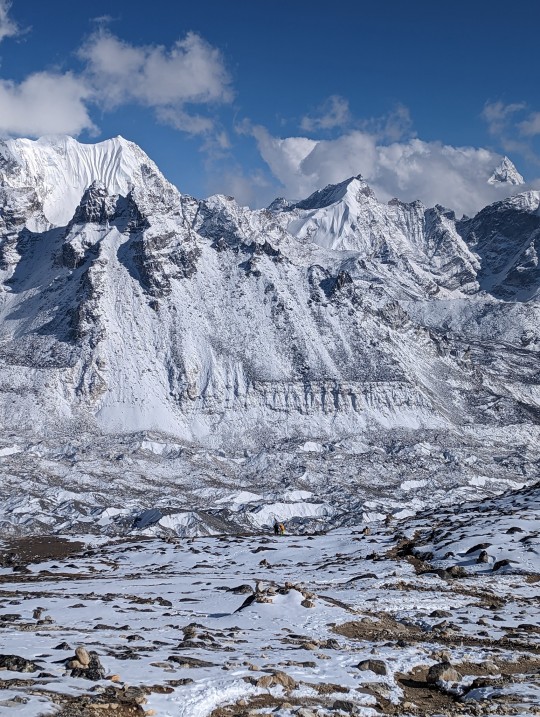
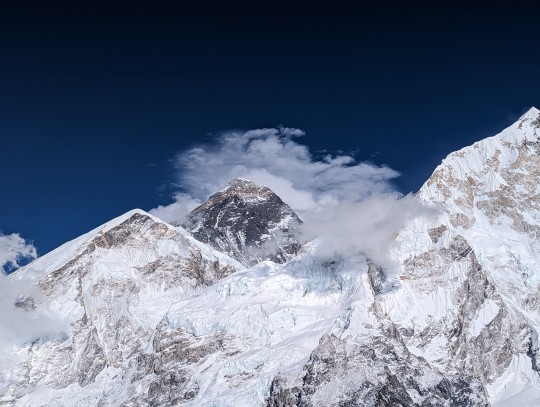
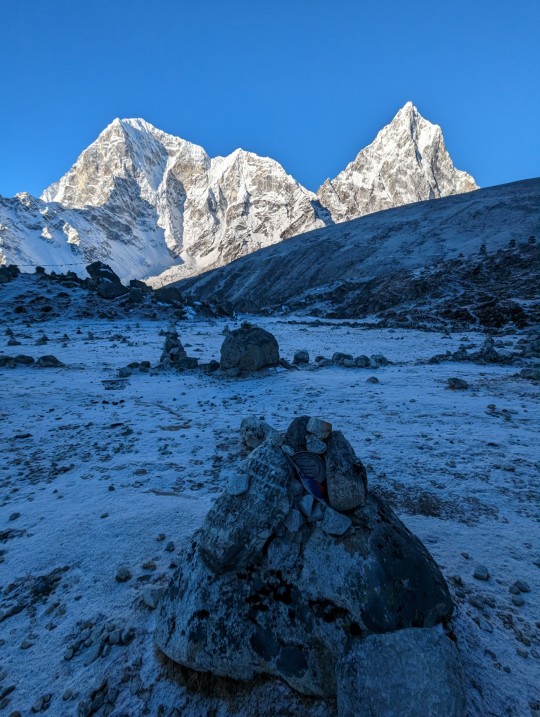
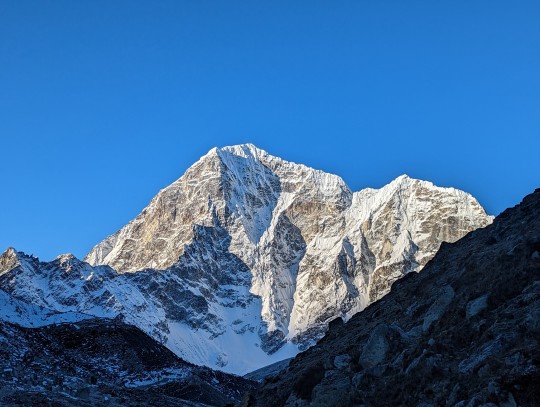
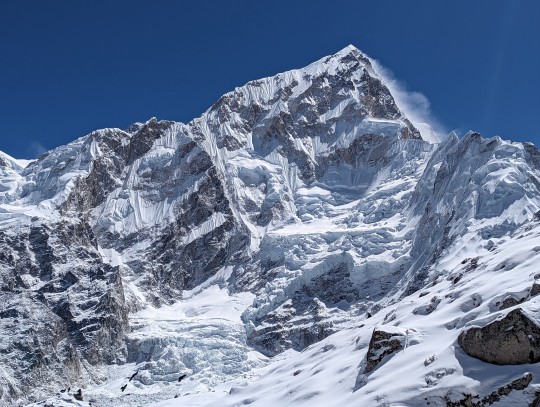
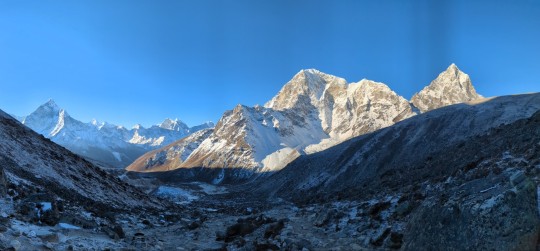
Explain this shit
7 notes
·
View notes
Text
Beauty of Everest Base Camp Trek 2024

Everest Base Camp awaits a 14-day adventure. Spectacular views, Sherpa warmth, Sagarmatha Park beauty, and spiritual moments in ancient monasteries.
2 notes
·
View notes
Text
#Nepal trekking#Solo trekking#Trekking regulations#Remote regions#Himalayan trekking#Nepal tourism#Safety regulations#Trekking permits#Travel restrictions#Adventure tourism#Trekking guides#Solo travel#Outdoor adventure#Annapurna circuit#Everest base camp#Langtang trek#Manaslu trek#Mustang trek#your spiritual journey
2 notes
·
View notes
Text
Everest base camp trek tea houses
Choosing the right accommodation is crucial for a comfortable and enjoyable Everest Base Camp trek. The most common option is staying in teahouses, simple lodges offering beds, blankets, and communal dining areas.
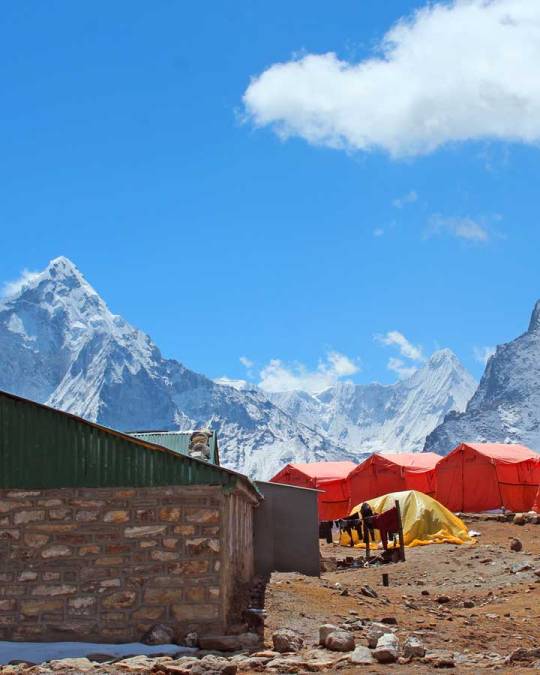
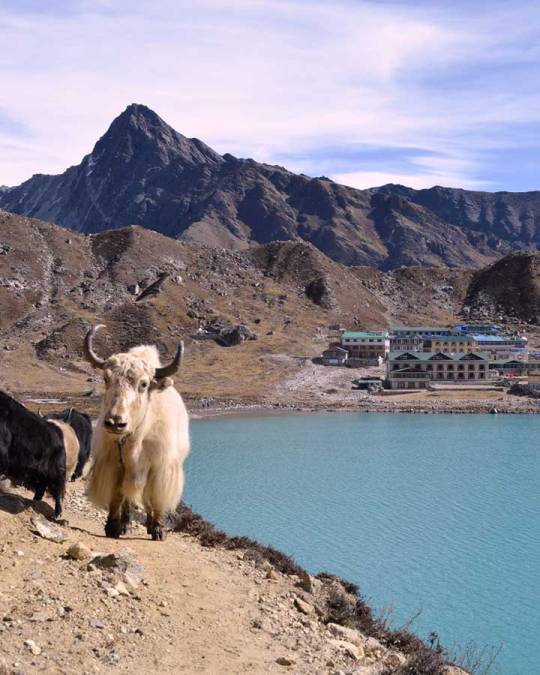




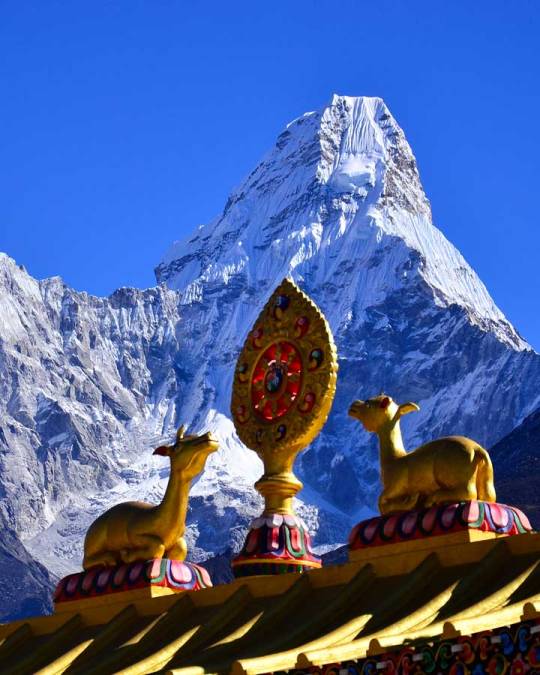

#nepal#ruggedtrailsnepal#trekking in nepal#nepal trekking#everest base camp trek tea house#accommodation during the everest base camp trek#nepal trekking tea house#tea house trek in nepal#everest base camp
0 notes
Text

Hi, yes, I'm already following along. Sam looks SO happy. 😍

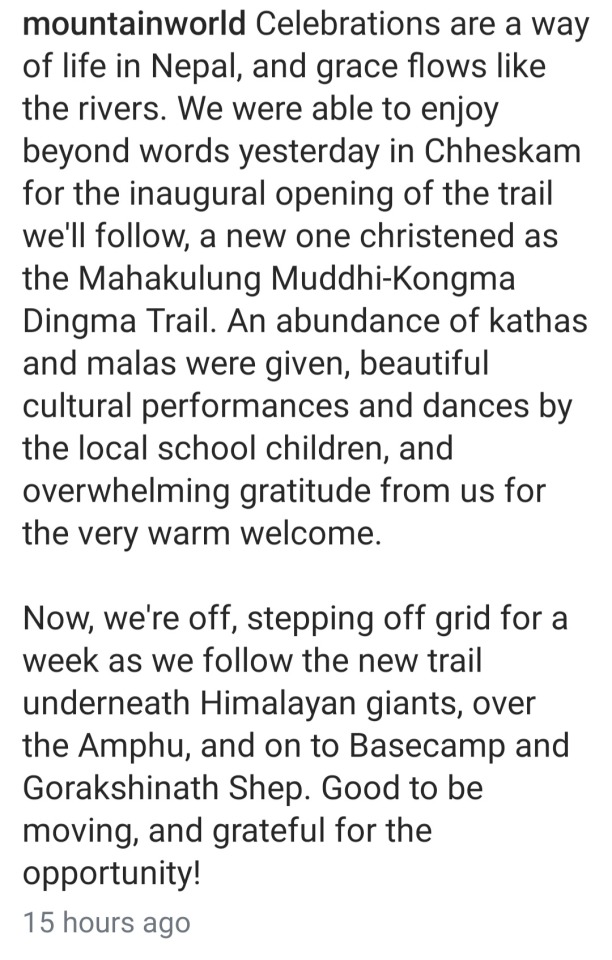


Can't wait to see and read more! Life changing experience for sure.
#moutainworld#sam heughan#jake norton#mount everest#everest#everest base camp#everest base camp trek
45 notes
·
View notes
Text
My Everest Base Camp Trek Experience

Trekking to Everest Base Camp (EBC) has always been a dream of mine, and I can finally say I’ve checked it off my bucket list. As an experienced trekker, I’ve ventured into some incredible landscapes, but nothing quite compares to the awe-inspiring beauty and challenge of the Everest Base Camp Trek. This journey was physically demanding, mentally rewarding, and, without a doubt, the most unforgettable adventure I’ve ever had.
The Journey Begins
My journey to Everest Base Camp started with the exciting flight from Kathmandu to Lukla, which in itself was a thrill. As we approached the Lukla airport, nestled in the mountains, I could feel the adrenaline build up—it’s known to be one of the most thrilling (and nerve-wracking) flights in the world. The tiny airport, perched on the side of a mountain, was a sign that I was truly heading into the heart of the Himalayas.
Once I landed in Lukla, the real trek began. The first day of trekking took us through lush forests and charming Sherpa villages, with each step offering glimpses of towering peaks. At first, I was just focused on getting used to the altitude, but as we continued, I couldn’t help but become more and more amazed by the landscape. The trail became increasingly rugged, and as we passed through villages like Phakding and Namche Bazaar, I began to understand why this trek is so iconic.
The Challenges and Triumphs
The first few days were relatively easy, but as we began to ascend toward higher altitudes, the challenges intensified. Trekking through rugged terrain and long days of walking were physically demanding. But what I hadn’t fully prepared for was how altitude affects your body. As we trekked higher, I found myself taking more frequent breaks, slowing down to allow my body to acclimatize. Thankfully, the itinerary had built-in acclimatization days, particularly in Namche Bazaar, which made the adjustment easier.
One of the most rewarding parts of this trek was how my body slowly adapted to the altitude. On the second day at Namche Bazaar, I spent time exploring the village and learning more about the Sherpa culture. The people here have an incredible connection to the mountains, and it’s fascinating to see how deeply their lives are intertwined with Everest and the surrounding peaks. The experience of staying in these Sherpa villages, interacting with the locals, and seeing their way of life up close was something truly special.
Reaching Everest Base Camp
As we continued our trek through places like Tengboche and Dingboche, I could feel the anticipation building. Reaching Everest Base Camp was the culmination of the entire journey, but what made it so meaningful was everything that came before it—the incredible landscapes, the sense of personal challenge, and the stunning vistas that unfolded with each new day.
Standing at Everest Base Camp itself was surreal. There’s something incredibly humbling about being at the foot of the world’s tallest peak, knowing that climbers begin their perilous ascent here. The view of Everest from base camp is breathtaking, but the real magic of this moment comes from the feeling of accomplishment—knowing you’ve made it to one of the most iconic places on Earth.
Kala Patthar: The Best View of Everest
For many trekkers, the highlight of the journey is reaching Kala Patthar, which offers the best panoramic view of Mount Everest. Standing at 5,500 meters, Kala Patthar was my favorite vantage point during the trek. Watching the sunrise over Everest and the surrounding peaks was one of the most awe-inspiring sights I’ve ever seen. The golden light hit the snow-capped peaks, turning them into a shimmering sea of white and orange—it felt like being on top of the world.
The Unforgettable Experience
As I reflect on the entire journey, what stands out the most is the overwhelming beauty of the landscape and the rich culture I had the privilege of experiencing. From the vibrant monasteries to the quaint tea houses nestled in the mountains, the trek provided more than just stunning views—it offered a glimpse into the lives of the Sherpa people and a connection to the incredible natural world that surrounds them.
Throughout the trek, I had to face the harsh realities of trekking at high altitudes—extreme cold, difficult terrain, and unpredictable weather. But the challenge was part of what made the experience so rewarding. Being out there, surrounded by some of the world’s highest peaks, was a reminder of the power and beauty of nature.
Completing the Everest Base Camp Trek was a challenging and rewarding experience, and I couldn’t have asked for a better trekking partner than Trek The Himalayas. From the moment I arrived in Kathmandu to the day I completed the trek, the team ensured everything was perfectly organized, from permits to accommodations. The guides, all experienced mountaineers and certified in wilderness first aid, were knowledgeable and professional, always putting safety first while also making sure we had the best possible trekking experience.
Thanks to their expertise and thoughtful planning, I was able to focus on the journey itself and fully enjoy the trek. The well-paced itinerary allowed me to acclimatize properly, and their attention to detail made all the difference in navigating the challenges that come with trekking in the high Himalayas. For anyone considering this trek, I highly recommend doing it with an experienced company like Trek The Himalayas.
The Everest Base Camp Trek is a journey that combines physical challenge, personal achievement, and a deep connection with nature. It is an experience that leaves you in awe of the natural beauty of the Himalayas, the resilience of the Sherpa people, and the power of the world’s tallest mountain. For anyone who loves trekking, this is a must-do adventure that should be on your bucket list.
If you're planning to take on this trek, be prepared for both the challenges and the rewards. But more than anything, be ready to experience something truly life-changing—because the Everest Base Camp Trek is an adventure you will never forget.
0 notes
Text
The Ultimate Guide to Everest Base Camp: Trekking and Altitude Insights
Embarking on a journey to Everest Base Camp (EBC) is a dream for many adventure enthusiasts. Nestled in the heart of the Himalayas, the trek combines breathtaking landscapes, a peek into Sherpa culture, and an opportunity to witness the grandeur of Mount Everest up close. Whether you are an experienced trekker or a first-timer, proper preparation and understanding the challenges are key to making the journey memorable. This ultimate guide will walk you through essential trekking tips, insights on altitude, and what to expect during the adventure.
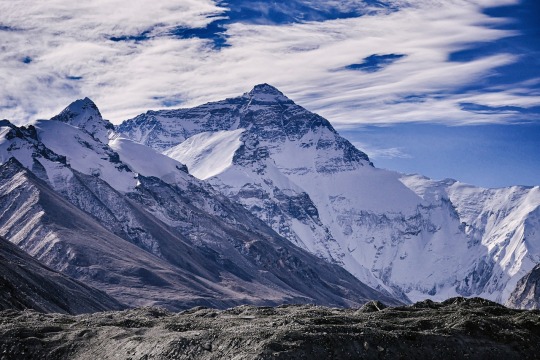
Why Trek to Everest Base Camp?
The trek to Everest Base Camp is more than just a journey; it’s an experience of a lifetime. From serene monasteries to the striking beauty of Khumbu Glacier, every step offers something unique. The trek allows you to:
Witness the majestic peaks of the Himalayas, including Everest, Lhotse, and Ama Dablam.
Immerse yourself in the rich culture of the Sherpa people.
Challenge yourself physically and mentally.
Capture unparalleled panoramic views that few places in the world can rival.
Trekking Route Overview
The EBC trek typically starts with a thrilling flight to Lukla, a small airport perched amidst the mountains. From Lukla, the trail winds through picturesque villages, dense rhododendron forests, and rugged terrains. Here’s a brief itinerary overview:
Day 1-2: Arrival in Lukla and trek to Phakding.
Day 3: Trek to Namche Bazaar, a vibrant Sherpa town.
Day 4: Acclimatization day in Namche Bazaar.
Day 5-6: Trek through Tengboche and Dingboche.
Day 7-8: Reach Lobuche and Gorak Shep.
Day 9: Explore Everest Base Camp and trek back to Gorak Shep.
Day 10-12: Return trek to Lukla.
Each day presents its challenges and rewards, making it essential to pace yourself and prioritize acclimatization.
Altitude and Acclimatization
Altitude is one of the most critical factors to consider during the trek. As you ascend, the oxygen levels decrease, which can lead to altitude sickness if not managed properly. Common symptoms include headaches, nausea, and fatigue. To minimize the risk, follow these guidelines:
Acclimatize properly: Spend extra days at key locations like Namche Bazaar and Dingboche.
Stay hydrated: Drink plenty of water throughout the trek.
Ascend slowly: Follow the "climb high, sleep low" principle to allow your body to adjust.
Listen to your body: Don’t ignore symptoms; descend if they worsen.
Physical Preparation and Fitness
The EBC trek is a moderate-to-difficult trek, requiring a good level of fitness. You don’t need to be an athlete, but regular cardio and strength training are essential in the months leading up to the trek. Include activities like:
Long-distance hiking or walking with a loaded backpack.
Aerobic exercises such as running, cycling, or swimming.
Strength training focusing on your legs, core, and endurance.
Essential Gear and Packing Tips
Packing wisely can make or break your trek. The weather in the Himalayas is unpredictable, so it’s crucial to carry gear that caters to a range of conditions. Here’s a checklist of essentials:
Clothing: Layering is key. Carry thermal wear, fleece jackets, waterproof outerwear, and comfortable trekking pants.
Footwear: Invest in high-quality trekking boots and break them in before the trek.
Accessories: Pack a hat, gloves, sunglasses, and a headlamp.
Sleeping gear: A warm sleeping bag is a must, even if staying in teahouses.
First aid: Include altitude sickness medication, pain relievers, and blister care.
Miscellaneous: Trekking poles, a reusable water bottle, energy snacks, and a map.
What to Expect During the Trek
Accommodation: Teahouses along the route provide basic lodging and meals. Rooms are often shared, and bathrooms may be communal.
Food: Meals are simple but hearty, featuring staples like dal bhat, noodles, and momos. Try local specialties for an authentic experience.
Weather: Expect a mix of sunny days and chilly nights, with temperatures dropping significantly as you ascend.
Best Time to Trek
The ideal time to trek to Everest Base Camp is during the pre-monsoon (March to May) and post-monsoon (September to November) seasons. These months offer stable weather, clear skies, and optimal trekking conditions.
Cultural Insights
The trek isn’t just about reaching Base Camp; it’s also about immersing yourself in the Himalayan culture. Visit monasteries, interact with the Sherpa community, and participate in traditional customs. Understanding and respecting local traditions will enrich your experience.
Tips for a Successful Trek
Hire a guide or join a group for safety and support.
Be prepared for basic living conditions.
Keep your backpack light, carrying only the essentials.
Capture memories but don’t forget to enjoy the moment.
Conclusion
Trekking to Everest Base Camp is a journey of self-discovery, perseverance, and awe-inspiring beauty. With proper preparation, a mindful approach to altitude, and a spirit of adventure, this trek will leave you with memories to last a lifetime. Whether it’s your first high-altitude trek or another addition to your bucket list, Everest Base Camp promises an unparalleled experience that will stay with you forever.
0 notes
Text
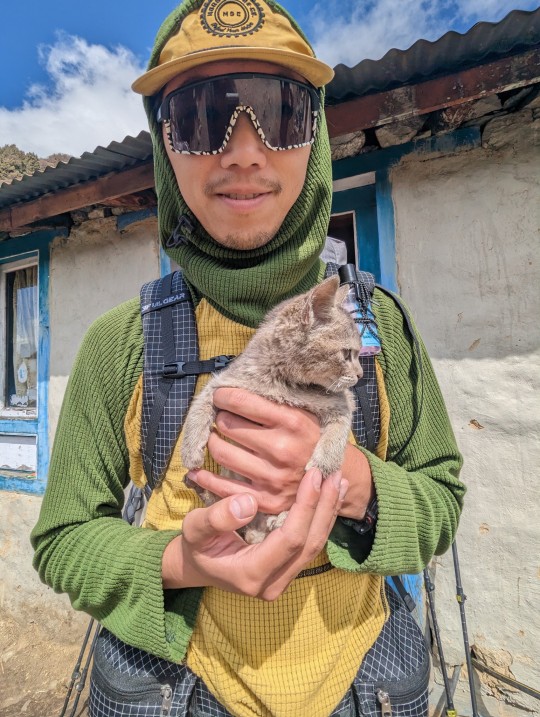



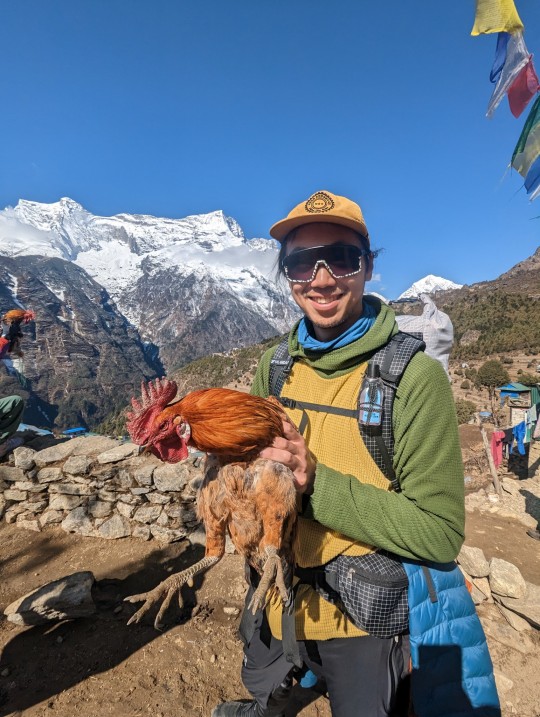

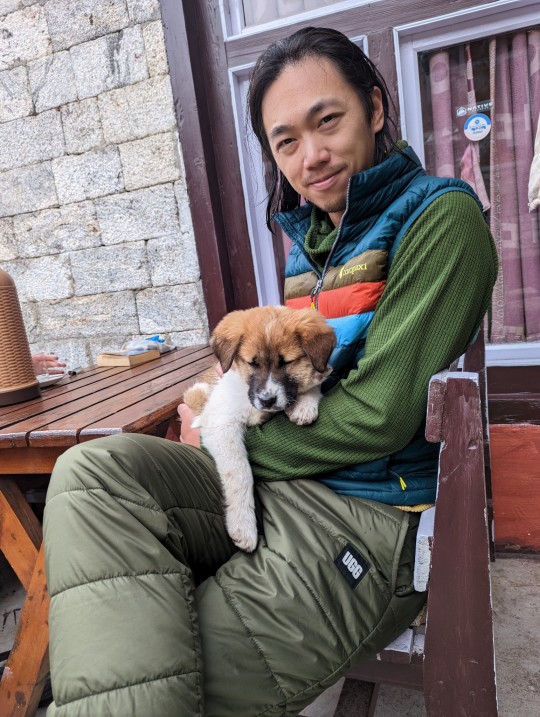
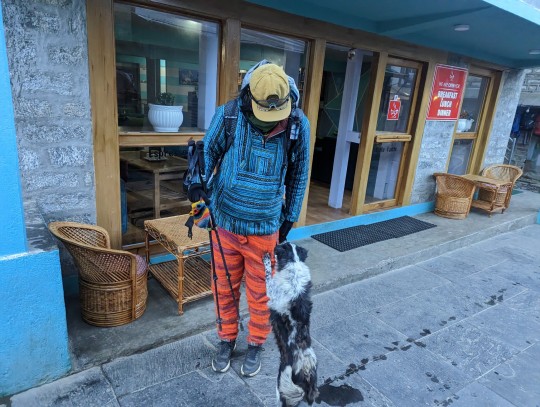
Hima-touchin' animals
4 notes
·
View notes
Text
Everest Base Camp: Fast & Furious! My Rapid Ascent
Everest Base Camp. It's on every adventurer's bucket list. But what if you're short on time? Enter the Rapid Everest Base Camp Trek – a whirlwind adventure that gets you to the foot of the world's highest peak in just 12 days!
Why Choose Rapid?
Let's be honest, most of us don't have weeks to spare. The rapid trek cuts down on acclimatization days, making it perfect for those with limited time but a good level of fitness.
My Experience:
The journey starts with a thrilling flight to Lukla, the gateway to Everest. From there, it's a non-stop adventure, hiking through stunning Sherpa villages, crossing suspension bridges, and marveling at the towering peaks.
The rapid itinerary means longer trekking days and quicker ascents. It's challenging, but the incredible views make it worthwhile. Imagine seeing Everest, Lhotse, Nuptse, and Ama Dablam up close and personal!
Acclimatization is Key:
Even on a rapid trek, acclimatization is crucial. We took it seriously, following the "climb high, sleep low" mantra. Drinking plenty of water and pacing ourselves also helped.
The Highlight:
Reaching Base Camp was a surreal experience. Standing at the foot of Everest, surrounded by towering mountains, is something I'll never forget. It's a humbling and awe-inspiring moment.
Tips for a Rapid Trek:
Be physically prepared: Train beforehand with hikes and cardio.
Pack light: Every ounce counts when you're trekking long days.
Listen to your body: Don't push yourself too hard, especially at high altitudes.
Hire a porter: They can carry your heavy gear and make the trek more enjoyable.
Enjoy the journey! Even though it's fast-paced, take the time to appreciate the stunning scenery and Sherpa culture.
Final Thoughts:
The Rapid Everest Base Camp Trek is a challenging but incredibly rewarding experience. If you're fit, adventurous, and short on time, it's the perfect way to tick this iconic trek off your bucket list. Just remember to be prepared, acclimatize properly, and most importantly, have fun!
0 notes
Text
13 Days Trekking in EBC Nepal
#ebc#ebc trekking permit#ebc trek itinerary#base camp everest#permit for ebc trek#everest base camp travel tips#everest base camp#nepal ebc trekking#ebc trek in nepal#khumbu region#mount everest trek#everest trek#everest trekking#mt everest trek
0 notes
Text
Essential Gear for the Annapurna Base Camp Trek
Trekking to Annapurna Base Camp (ABC) is a trip that promises stunning views, a strong connection to nature, and a sense of accomplishment. However, in order to really appreciate this experience, the proper gear is required. To help you prepare, I’ll provide a full list of everything you’ll need as well as a brief account of my own adventure.
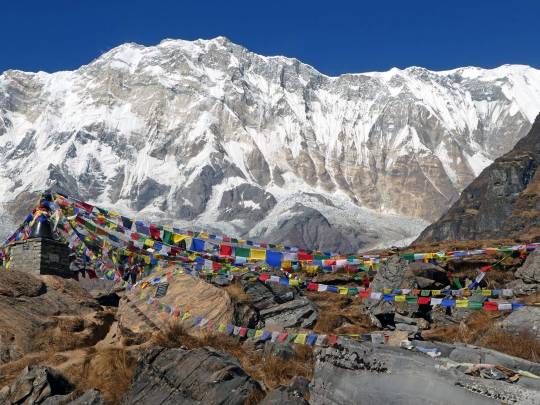
Clothing
1. Layering System: The weather in the mountains can change rapidly. Layering allows you to adjust your clothing as needed. Start with a moisture-wicking base layer, add an insulating middle layer, and finish with a waterproof and windproof outer layer.
2. Down Jacket: Nights and early mornings can be freezing, even in the warmer months. A down jacket is lightweight yet incredibly warm.
3. Trekking Pants and Shorts: Comfortable, quick-drying pants are a must. Some trekkers prefer convertible pants that can turn into shorts when it’s warm.
4. Thermal Wear: Thermal tops and bottoms are essential for the cold nights. They are lightweight and provide much-needed warmth.
5. Rain Gear: A good-quality rain jacket and pants will protect you from unexpected downpours. It’s best not to rely solely on the weather forecast.
6. Hat and Gloves: A warm hat and gloves are crucial for early mornings and high altitudes. Don’t underestimate the chill of the mountains.
Footwear
1. Trekking Boots: Sturdy, well-fitted trekking boots with good ankle support are non-negotiable. Break them in before your trek to avoid blisters.
2. Trekking Socks: Invest in high-quality, moisture-wicking socks. Bring a few extra pairs to keep your feet dry and comfortable.
3. Gaiters: Gaiters protect your feet and lower legs from mud, snow, and debris. They are especially useful in wet conditions.
Equipment
1. Backpack: A 40–50 liter backpack is ideal for carrying your essentials. Make sure it has a good frame and comfortable straps.
2. Sleeping Bag: A warm sleeping bag rated for temperatures below freezing is necessary. Many teahouses provide blankets, but having your own sleeping bag ensures warmth and hygiene.
3. Trekking Poles: Trekking poles reduce the strain on your knees and provide stability on uneven terrain. They are a real lifesaver, especially on steep descents.
4. Headlamp: A headlamp is essential for early morning starts or late arrivals at the teahouse. Always carry extra batteries.
5. Water Purification: Carry water purification tablets or a portable filter. Safe drinking water is vital, and buying bottled water in the mountains can be expensive and environmentally unfriendly.
6. First Aid Kit: Pack a basic first aid kit with band-aids, antiseptic wipes, blister care, pain relievers, and any personal medications.
Personal Items
1. Toiletries: Carry a small bag with essential toiletries, including biodegradable soap, toothpaste, a toothbrush, and wet wipes.
2. Sunscreen and Lip Balm: The sun at high altitudes can be intense. Protect your skin and lips with high-SPF sunscreen and lip balm.
3. Sunglasses: Good-quality sunglasses with UV protection are essential to protect your eyes from the glaring sun and snow reflections.
4. Snacks: Energy bars, nuts, and dried fruits provide quick energy boosts during the trek. While food is available at teahouses, having your own snacks can be comforting.
Personal Experience
When I first decided to trek to Annapurna Base Camp, I was excited but also anxious about the unknowns. I remember vividly how my well-broken-in boots felt like old friends on the trail, providing comfort and support with each step. One evening, at around 4,000 meters, the temperature dropped dramatically. I was grateful for my down jacket, which kept me warm and allowed me to enjoy the stunning starry sky.
There were moments when the climb seemed never-ending, and fatigue set in. But my trekking poles gave me the stability I needed, and small breaks with a handful of trail mix recharged my energy. The camaraderie with fellow trekkers, sharing stories and encouragement, made the journey even more memorable.
Conclusion
Preparing for the Annapurna Base Camp trip with the proper equipment is critical for a safe and pleasurable adventure. Each item on this list serves a purpose, and having them will let you to focus on the beauty of the journey rather than worrying about discomfort or safety. Remember that the mountains are both spectacular and demanding, and being prepared is essential for a good experience.
1 note
·
View note